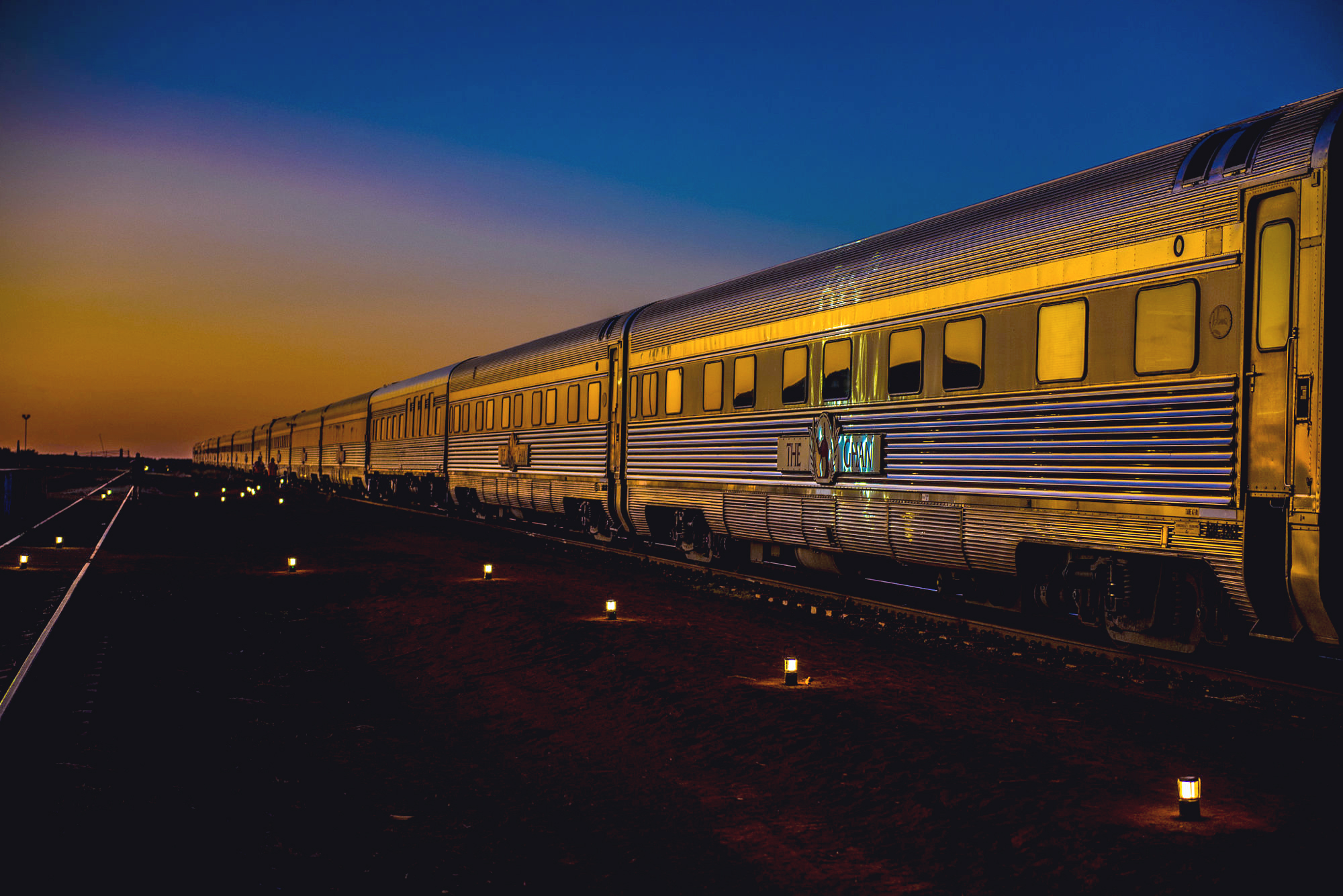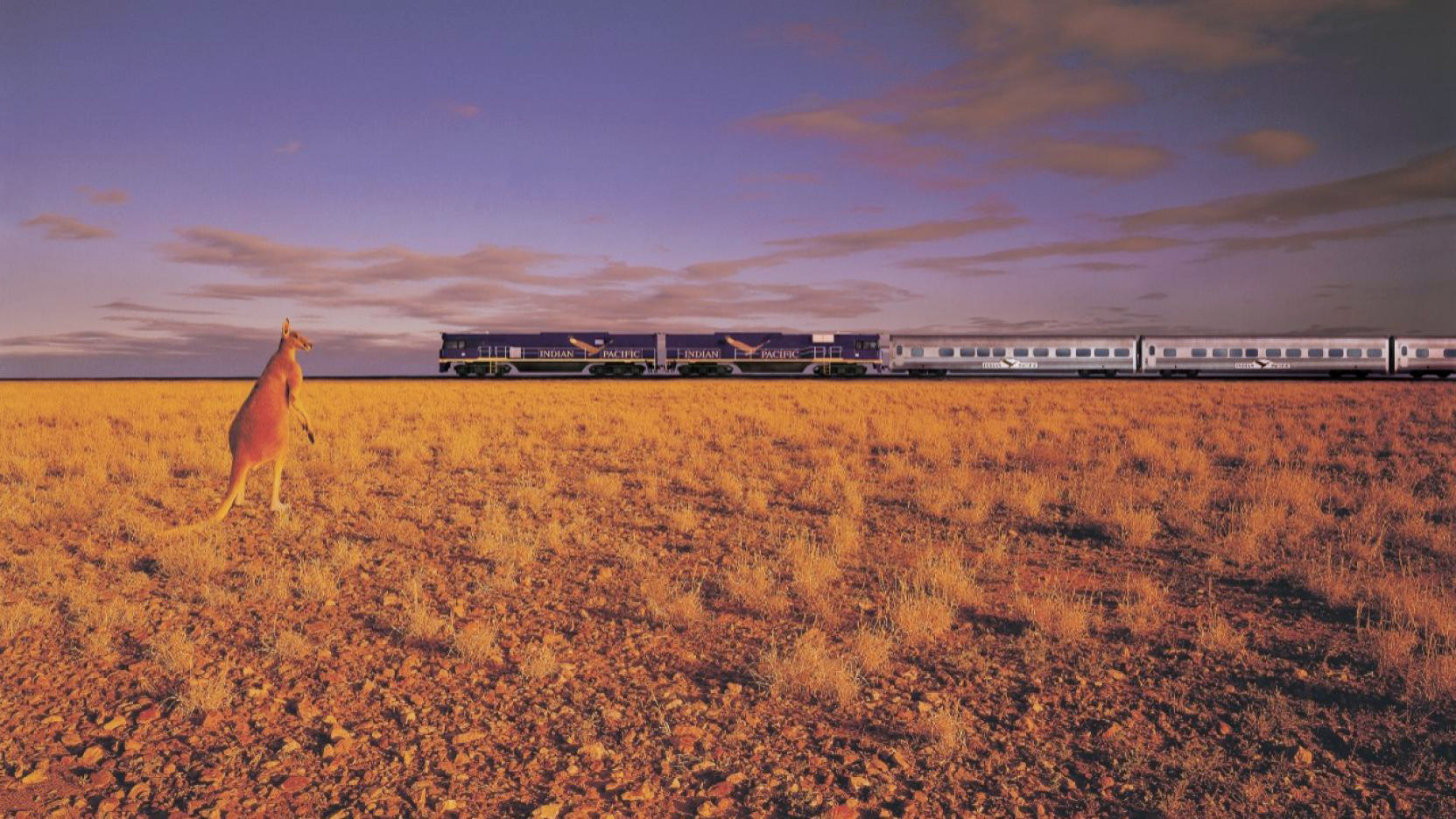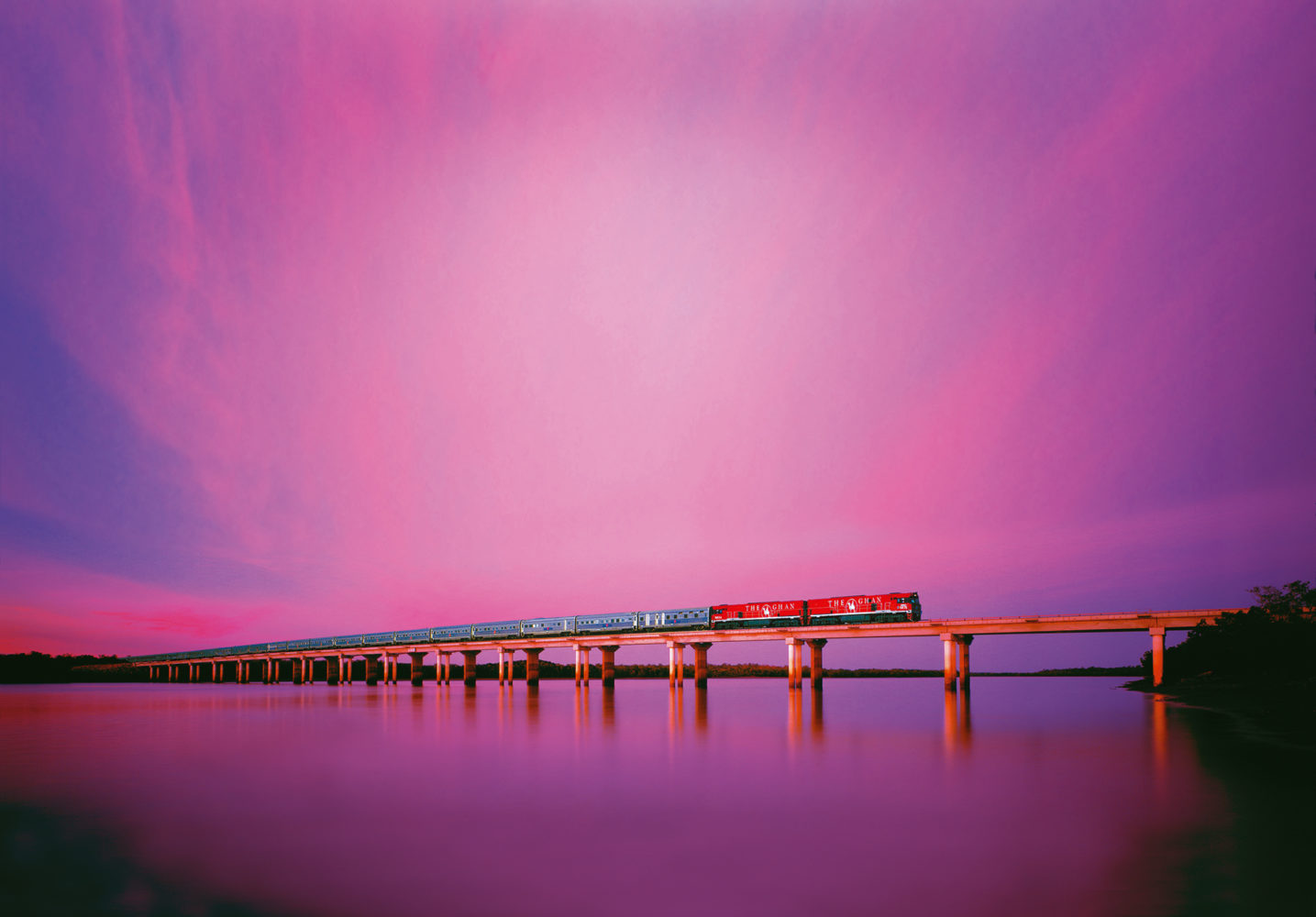Australia by Train: The Ghan and Indian Pacific
Australia is big. On this majestic continent, travelling by train turns those long journeying hours into a pleasant rhythm of scenery, dining and socialising. Hypnotising horizons, chinking cutlery, scenic sights, fabulous food and woody wines are regular occurrences when crossing the country by rail. We climb aboard for two very different train journeys through Australia.
Run by Great Southern Rail, The Ghan and Indian Pacific — the world’s only two transcontinental services — link Darwin and Adelaide (north to south) and Sydney and Perth (east to west), taking passengers across Australia’s Red Centre via the tropical Top End and sweeping plains, or through the Blue Mountains and over the mesmerising Nullarbor Plain.
The Ghan: A town called Alice

Travellers taking the three-day, two-night, 3000-kilometre journey in the direction of Darwin from Adelaide will witness the agricultural lands of South Australia morph into the majestic Flinders Ranges and then the mythical Outback, where blood-brown earth contrasts sublimely with cobalt blue skies. As the 750-metre, 30-carriage behemoth rolls into sleepy Alice Springs, jaws drop at the lofty MacDonnell Ranges.
The second half of the trip showcases the varied tropical wonders of the Northern Territory as The Ghan — named after the Afghan cameleers who helped explore the country’s interior in the late 19th century — passes through Katherine, famed for its astonishing sandstone gorge, before arriving at its final destination of Darwin.

Whistle stop tours at both Alice and Katherine allow passengers to take on a variety of activities including canoeing, camel riding, bushwalking, or even scenic helicopter rides. Our Nitmiluk boat trip was breath-taking, building upon the excitement generated by hours of addictive window gazing.
So enthralled was I by the subtly changing countryside, the captivating desert-scape and the rolling ranges, that both mornings I set my alarm for dawn to renew my curious love affair with the track’s surroundings, watching as the sun rose over the arid red soils of the barren yet beautiful Outback or the salt flats of Australia’s intriguing interior.
The Indian Pacific: The road is long

Crossing three states in three days and three nights, the mammoth ride from Sydney to Perth — almost 4000 kilometres — packs an instant punch as the train takes in the Blue Mountains before weaving through the lush New South Wales countryside. The next morning, we pass through the offbeat bushland oasis of Broken Hill, Australia’s oldest mining town.
However, the unique selling point of the Indian Pacific — which was completed in 1970, some 34 years prior to The Ghan — is the crossing of the beguiling Nullarbor Plain. The famous ‘Blueys’ and the undulating hills that surround both Adelaide and Perth could hardly contrast more with the vast, sparse, pancake-flat Nullarbor (Latin for ‘no trees’), over which the train careers for almost 500 kilometres without so much a kink in the track.

Landmarks are few and far between along the world’s longest stretch of straight railroad, although the stop-off in Cook (population: four) proves a real delight. Once a bustling railway settlement with a country club boasting a swimming pool, tennis courts, cricket nets and a nine-hole golf course, this South Australian oddity has fallen into deserted disrepair. A gift shop remains, run by the two ladies of the ghost town, while the odd sign reminds visitors of the place’s heritage: ‘If you’re a crook, come to Cook’, one advises; ‘Our hospital needs your help — get sick’, pleads another.
Across the Nullarbor and well into Western Australia, the gold mining town of Kalgoorlie offers travellers another chance to stretch their legs — and a bus tour which delves into the town’s swashbuckling Wild West-style history with two major sites: the immense open-top mine and strangely sterile red light district.
Life on board: A medley of meals and wildlife

Over the course of both journeys I became very familiar with the Queen Adelaide Restaurant and Outback Explorer Lounge — the communal areas for Platinum Service (high-end) and Gold Service (shared or single cabin) passengers. Damien, the affable bartender, never failed in his recommendations of local Pinots and Merlots.
The constant momentum is wonderfully somnolent when it comes to hitting the sack, while the jingle of knives and forks and the tinkle of glasses create a perfect symphony with which to accompany the many meals. Breaking up the day delightfully, these meals rarely disappoint: a full ‘Aussie’ or continental breakfast in the morning, hearty lunches, and three-course dinners in the evening.
Besides the compelling geographical changes that greeted my gaze, The Ghan and Indian Pacific also helped me brush up on my Australian wildlife: on both trips I noticed numerous kangaroos, wallabies and emus, not to mention hovering birds of prey and livestock. Keep an eye out for wild camels, too: Australia has the only feral herds of dromedaries in the world, with numbers estimated at well over a million.
In fact, without the help of these camels, neither The Ghan nor the Indian Pacific would have ever been built: more food for thought as I whiled away the hours slowly getting closer to my destination — one I appreciated far more by virtue of the staggering journey I experienced en route.

